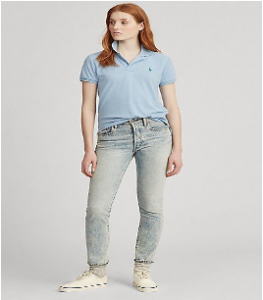So far in our journey, we’ve been finding out how the fashion industry needs to urgently change given how serious an impact it is having on our planet. This time we delve into current attempts by the industry to change its way.
By Nadin Moustafa, PhD student in the Department of Chemical Engineering.
It is apparent that fast fashion is extremely harmful to the environment. As with many other global issues, it became one of the industries where public awareness is increasing. However fast fashion, like recycling and avoiding plastic, is a cause that individuals can contribute to directly. Contrary to industries where the ethical decisions are a bit harder to take such as traveling via airplanes. Or ones we might not be able to necessarily contribute to individually, such as the environmental impact from non-renewables.

Since the fashion industry has gained attention in that aspect, many brands and retailers are starting to take actions towards sustainability. A survey was done by drapers and got more than 370 responses ranging from small brands, retailers, manufacturers and suppliers. There were quite interesting finds. 91.6% agreed that their customers are becoming more aware of environmental issues. 42.6% of the fashion brands and retailers said that they have a sustainable range. So why aren’t the fashion brands going completely sustainable if that’s what their consumers want? The biggest barrier, as you would probably guess, is cost. 60.3% of the respondents to the survey said that sustainability increases costs. In addition, consumers are not predominantly willing to pay more for sustainable fashion. Finally, some brands lack the required bustiness skills to incorporate sustainability into their supply chain (Drapers, 2019). So, what are brands currently doing in terms of sustainability?
Brands working towards sustainability in fashion
Sustainable efforts are continuously announced by brands. Several brands announce their targets towards decreasing their environmental impact. For example, Zalando partnered with Global Fashion Agenda, a leadership forum for industry collaboration on fashion sustainability. And Walope which includes luxury brands such as Harrods, Burberry and Dunhill, launched their first phase of their sustainability manifesto in 2019.

Some brands would focus on fabric innovation such as Stella McCartney where they replaced their synthetic and petrol-based elastomers with a new engineered component that is safe and toxic-free to the environment (Fashion United, 2020). Another aspect to focus on would be working towards a circular economy, ASOS partnered up with the London College of Fashion to pilot a training program on circular fashion. The learning outcomes will be implemented into their design team. Whereas, GAP Inc. and Nike will both incorporate sustainability and/or circular design training to their teams by 2020.
Industry’s intentions towards sustainability
It is relatively obvious that many brands are publicizing their intentions towards increasing sustainability in their supply chain. However, this ‘push’ can also be focused on marketing rather than protecting our environment. For example, H&M has a Conscious collection that is more ‘sustainable’ than other products they sell. The conscious collection marketing focuses on nature and uses the color green as well as soft autumn colors. However, detailed information is not given, in fact their website explains their conscious collection in less than five lines. It does not actually include sufficient information such as how the products are produced, recycled or their carbon footprint relative to other products they sell.




Therefore, this begs us to question whether brands such as H&M are actually working towards sustainability in the industry. Considering the significant amount of clothing produced by the fashion industry and our growing and constant demand, means that it would take H&M approximately 12 years to recycle what they produce in one day (Medium, 2019). Hence, brands can be promoting sustainability to maximize profits without actually decreasing their environmental impact. This is backed by research where a review of consumer sales between 2013 and 2018 shows that products highlighted as ‘sustainable’ would sell much faster than products that were not (Kronthal-Sacco & Whelan, 2019).
Sustainability needs all of us!
Brands, manufacturers, retailers and suppliers must take responsibility for the clothes they produce. However, as with everything everyone needs to help and have their input. Governments should also support and enforce change. And we as consumers should be willing to buy more sustainable clothing. This may be more expensive, but also hopefully we should be aiming for less garments per year and increasing the lifespan of clothes we already have. Finally, inventive and creative models, techniques and innovations are required if we are to maintain fast fashion in our perspective whilst decreasing its significant environmental impact.
Bibliography
Fashion United, 2020. 20 Sustainability efforts of the fashion industry in January 2020. [Online]
Available at: https://fashionunited.uk/news/business/20-sustainability-efforts-of-the-fashion-industry-in-january-2020/2020020647391
Medium, 2019. ‘Sustainable Style’: The Truth Behind The Marketing of H&M’s Conscious Collection. [Online]
Available at: https://medium.com/@tabitha.whiting/sustainable-style-the-truth-behind-the-marketing-of-h-ms-conscious-collection-805eb7432002
Kronthal-Sacco, R. & Whelan, T., 2019. Sustainable Share Index: Research on IRI Purchasing Data. [Online]
Available at: https://www.stern.nyu.edu/sites/default/files/assets/documents/NYU%20Stern%20CSB%20Sustainable%20Share%20Index%E2%84%A2%202019.pdf